322-344 East 69th Street Rowhouses
Introduction
Text-to-speech Audio
The 12 rowhouses in Lenox Hill on the south side of E. 69th Street from #322 to #344 are remnants of the scores of new residences built in the neighborhood in the late nineteenth century. The coming of the elevated train above 3rd Avenue to the neighborhood in 1878 made commuting to lower Manhattan easy, and developers soon filled the streets with rowhouses for housing the middle class. In 1879, architect Jacob H. Valentine designed six of the rowhouses; William R. Smith designed the rest. The brick rowhouses faced in brownstone are a surviving example of the neo-Grec style that became popular in the era but is rare to be found today amidst the area's altered rowhouses and high-rise buildings. The rowhouses were listed in the New York and National Registers in 1984.
Images
Rowhouses along E 69th St. in 1983, Hungarian Reformed Church & 334 E. 69th St. rowhouse in foreground, looking W (Dolkart)
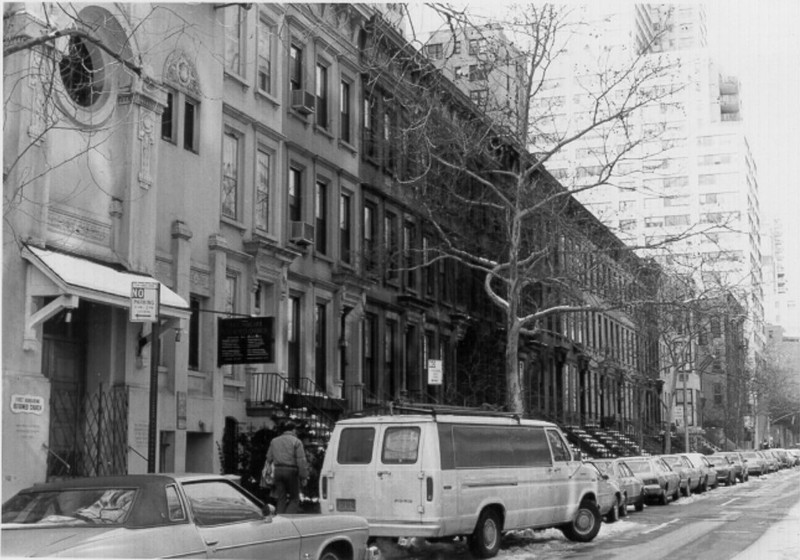
Main facades of rowhouses on E. 69th St., from L to R: #332, #330, #328 (Dolkart 1983)
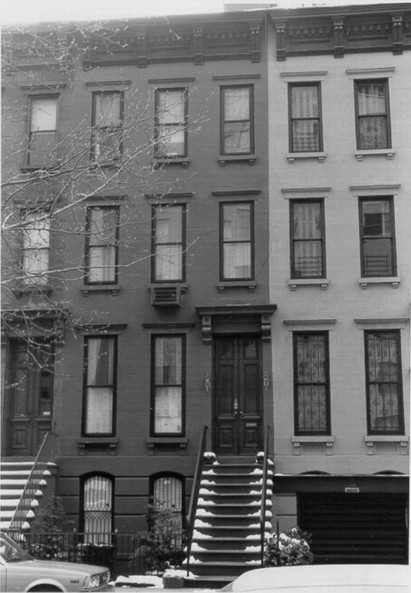
Main facades of rowhouses on E. 69th St., from L to R: #342, #340, #338 (Dolkart 1983)
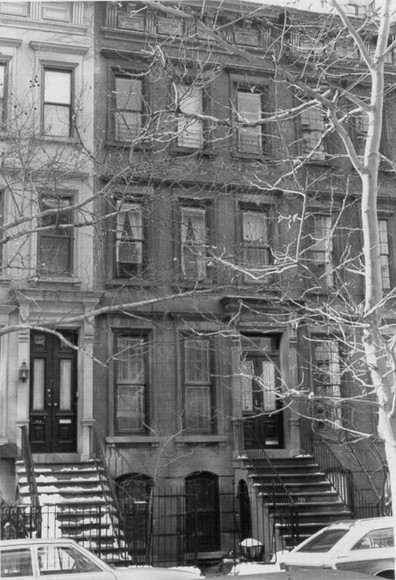
Rowhouses at 322-344 E. 69th St. on 1894 mqp (Bromley & Co. p 29)
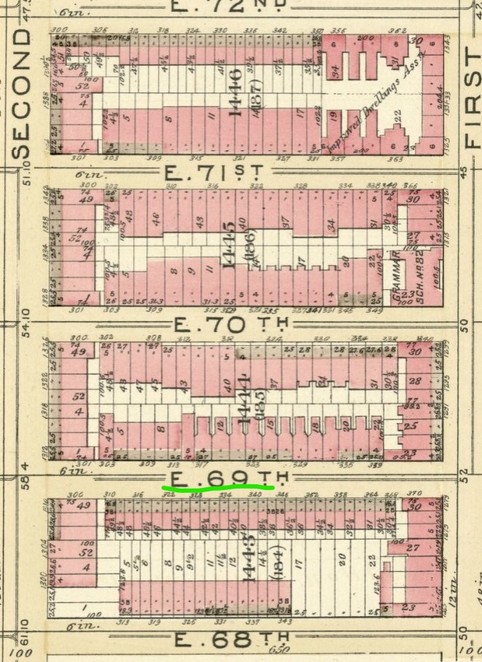
Future location of rowhouses at 322-344 E. 69th St. (yellow line) on 1860 map of Lenox Hill area (Johnson)
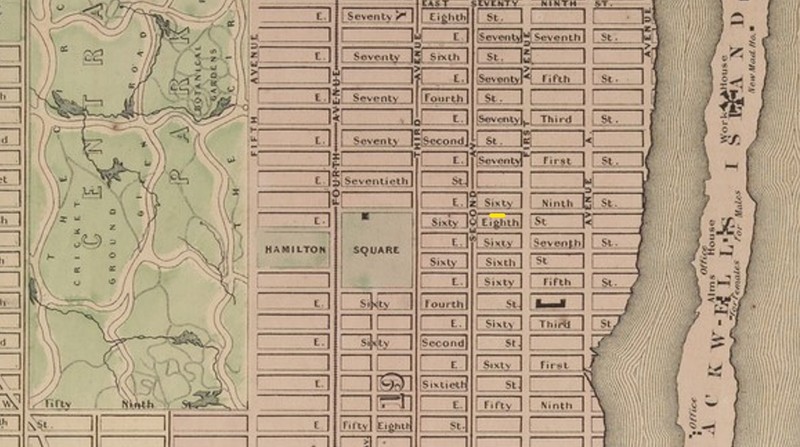
Backstory and Context
Text-to-speech Audio
The architect of the rowhouses from 322 to 332 E. 69th St. Jacob H. Valentine, was born in 1823 and was a practicing architect in New York City by 1879. Examples of his residences have survived in several New York historic districts, ranging in style including Italianate, neo-Grec, Queen Anne, and Renaissance Revival in flats, rowhouses, and tenements. Valentine lived in the Upper West Side of New York City at the time of his death in 1903 at age 80. William R. Smith was the architect who designed the rowhouses at #334-344.
The rowhouses were designed in the neo-Grec Style which used sharper, more angular and geometric lines able to be cut by the new stone-cutting machines; the previously-popular fluid, curvy lines were not able to be machine-cut.
Each architect's style was slightly different, although all of these rowhouses were built by James E. Ray. Valentine's rowhouses were fronted in brownstone and featured double-door entrances at the top of high stoops and topped by slabbed lintels supported by stylized brackets. The base of each townshouse is cut by a pair of segmental-arched windows. The sills of the parlor windows on the first floor have sills supported by corbels similar to the doorway brackets. A galvanized-iron cornice with dentils and angular brackets top the main facade.
As an example of Valentine's design, the rowhouse at 330 E. 69th Street is three stories tall over a basement. When the rowhouse was documented in 1983, the building still retained its original cornice of galvanized iron and a bracketed doorway lintel. A basement-level garage was incorporated in the neighboring rowhouse (#328) in 1966.
The 6 rowhouses designed by Smith are slightly more ornate than those by Valentine. The main elements and materials are the same, but Smith's enframements of the doors and windows are fancier. Each entrance has a full enframement with a deep lintel set on angular brackets. The windows also have full enframements with complex lintels. The cast-iron railings of all 12 of the rowhouses were still the originals in 1945 but were replaced by the mid-1980s; many of the exterior doors also were replacements and some of the rowhouses have been painted.
The rowhouses are now typically two-family homes and do not come onto the market for sale often. One that is a single-family home without a basement unit (#332) contains nine rooms in about 3,000 square feet, with three wood-burning fireplaces. The rowhouse at the east end of this group (#344) has become the parsonage for the adjacent church, the First Hungarian Reformed Church (a brick building faced in yellow stucco, built in 1916 for a congregation established in 1895).
Sources
Anonymous. "Valentine - Jacob. Death notice.." New York Tribune (New York, NY) July 24th 1903. , 9-9.
Dolkart, Andrew S. Building-Structure Inventory Form, 330 East 69th Street, New York, N.Y.. Albany, NY. Division for Historic Preservation, New York State Parks and Recreation, 1983.
Hesch, Merrill. Dolkart, Andrew Scott. NRHP Nomination of Buildings at 322-344 E. 69th St., New York, N.Y.. National Register. Washington, DC. National Park Service, 1984.
Noonen, Theresa et al. Mount Morris Park Historic District Extension, Designation Report, New York City Government: Media. September 1st 2015. Accessed August 15th 2021. http://s-media.nyc.gov/agencies/lpc/lp/2571.pdf.
Zillow. 332 E. 69th St., New York, NY 10021, Zillow. August 1st 2021. Accessed August 13th 2021. https://www.zillow.com/homedetails/332-E-69th-St-New-York-NY-
10021/31538117_zpid/.
New York State Cultural Resource Information System (NYS CRIS): https://cris.parks.ny.gov/Default.aspx
NYS CRIS): https://cris.parks.ny.gov/Default.aspx
NYS CRIS): https://cris.parks.ny.gov/Default.aspx
Library of Congress: https://www.loc.gov/item/2010587355/
New York Public Library (NYPL): https://digitalcollections.nypl.org/items/f8694970-f3a1-0130-479a-58d385a7b928
